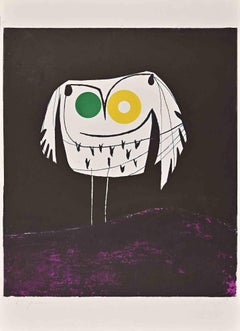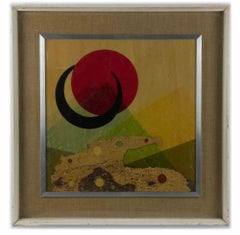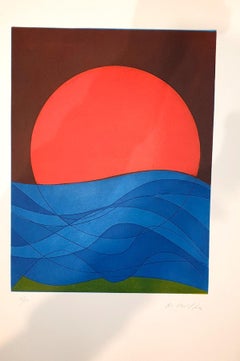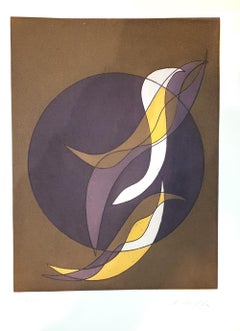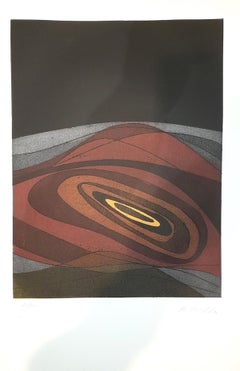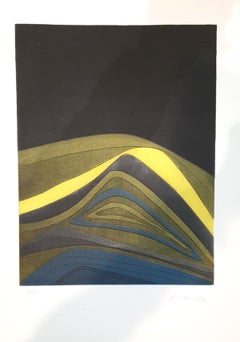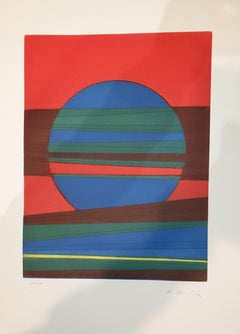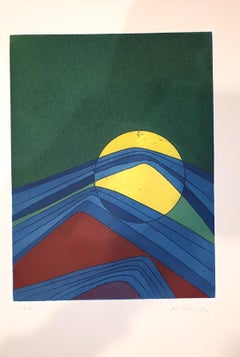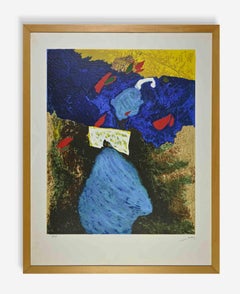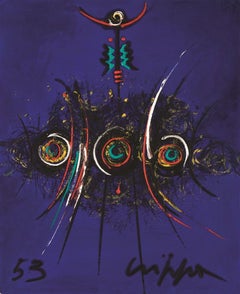Gian Carozzi
1960s Contemporary Figurative Prints
Screen
Mid-20th Century Abstract Abstract Paintings
Mixed Media
1970s Abstract Abstract Prints
Etching
1970s Abstract Abstract Prints
Etching
1970s Abstract Abstract Prints
Etching
1970s Abstract Abstract Prints
Etching
1970s Abstract Abstract Prints
Etching
1970s Abstract Abstract Prints
Etching
1970s Abstract Abstract Prints
Screen
Recent Sales
1950s Abstract Abstract Paintings
Oil
Roberto Crippa for sale on 1stDibs
The painter-sculptor Roberto Crippa was born in Milan in 1921. He studied at the Brera Art Academy in Milan where he was the fellow student of Aldo Carpi, Achille Funi and Carlo Carrá.
At the beginning of his career, like lots of young painters of his generation, Roberto Crippa was influenced by neo-Cubism. His first solo exhibition was at the Bergamini Gallery in Milan in 1947.
The artist was one of the first in Italy to practice gestural painting, which can be seen in his sharply colored spiral webs (ca. 1948–52). In 1948, Crippa became one of the founding members of the Spacialist group, a group founded around Lucio Fontana, whose objective was to search for a new spatial representation by technical means that was resolutely modern. At the same time, Crippa began to participate regularly in group exhibitions and, notably, the Biennale of Venice.
Later he devoted himself to what the artist called "Collages," cut-out forms that animate static surfaces. Crippa played with the effects of matter on rough, thick surfaces such as wood or bark as well as with plant elements on smooth, shiny metal or on transparent elements. His research naturally led him toward sculpture and from 1956 onward he constructed numerous cut-out, welded metal works of insects and monsters that are in line with the work of Lynn Chadwick. Crippa was interested in movement in space.
In parallel with his painting and sculpture, Roberto Crippa also experimented with graphic work (engravings, lithographs and illustrated books). During the mid-1960s, he moved toward monochrome reliefs, which he most often painted in tones of gray.
The artist died in a plane crash in 1972 in Bresso. He was 50 years old.
Find a collection of Roberto Crippa art on 1stDibs.
(Biography provided by Galleria d'arte Pirra)
A Close Look at Abstract Art
Beginning in the early 20th century, abstract art became a leading style of modernism. Rather than portray the world in a way that represented reality, as had been the dominating style of Western art in the previous centuries, abstract paintings, prints and sculptures are marked by a shift to geometric forms, gestural shapes and experimentation with color to express ideas, subject matter and scenes.
Although abstract art flourished in the early 1900s, propelled by movements like Fauvism and Cubism, it was rooted in the 19th century. In the 1840s, J.M.W. Turner emphasized light and motion for atmospheric paintings in which concrete details were blurred, and Paul Cézanne challenged traditional expectations of perspective in the 1890s.
Some of the earliest abstract artists — Wassily Kandinsky and Hilma af Klint — expanded on these breakthroughs while using vivid colors and forms to channel spiritual concepts. Painter Piet Mondrian, a Dutch pioneer of the art movement, explored geometric abstraction partly owing to his belief in Theosophy, which is grounded in a search for higher spiritual truths and embraces philosophers of the Renaissance period and medieval mystics. Black Square, a daringly simple 1913 work by Russian artist Kazimir Malevich, was a watershed statement on creating art that was free “from the dead weight of the real world,” as he later wrote.
Surrealism in the 1920s, led by artists such as Salvador Dalí, Meret Oppenheim and others, saw painters creating abstract pieces in order to connect to the subconscious. When Abstract Expressionism emerged in New York during the mid-20th century, it similarly centered on the process of creation, in which Helen Frankenthaler’s expressive “soak-stain” technique, Jackson Pollock’s drips of paint, and Mark Rothko’s planes of color were a radical new type of abstraction.
Conceptual art, Pop art, Hard-Edge painting and many other movements offered fresh approaches to abstraction that continued into the 21st century, with major contemporary artists now exploring it, including Anish Kapoor, Mark Bradford, El Anatsui and Julie Mehretu.
Find original abstract paintings, sculptures, prints and other art on 1stDibs.
Finding the Right Prints And Multiples for You
Decorating with fine art prints — whether they’re figurative prints, abstract prints or another variety — has always been a practical way of bringing a space to life as well as bringing works by an artist you love into your home.
Pursued in the 1960s and ’70s, largely by Pop artists drawn to its associations with mass production, advertising, packaging and seriality, as well as those challenging the primacy of the Abstract Expressionist brushstroke, printmaking was embraced in the 1980s by painters and conceptual artists ranging from David Salle and Elizabeth Murray to Adrian Piper and Sherrie Levine.
Printmaking is the transfer of an image from one surface to another. An artist takes a material like stone, metal, wood or wax, carves, incises, draws or otherwise marks it with an image, inks or paints it and then transfers the image to a piece of paper or other material.
Fine art prints are frequently confused with their more commercial counterparts. After all, our closest connection to the printed image is through mass-produced newspapers, magazines and books, and many people don’t realize that even though prints are editions, they start with an original image created by an artist with the intent of reproducing it in a small batch. Fine art prints are created in strictly limited editions — 20 or 30 or maybe 50 — and are always based on an image created specifically to be made into an edition.
Many people think of revered Dutch artist Rembrandt as a painter but may not know that he was a printmaker as well. His prints have been preserved in time along with the work of other celebrated printmakers such as Pablo Picasso, Salvador Dalí and Andy Warhol. These fine art prints are still highly sought after by collectors.
“It’s another tool in the artist’s toolbox, just like painting or sculpture or anything else that an artist uses in the service of mark making or expressing him- or herself,” says International Fine Print Dealers Association (IFPDA) vice president Betsy Senior, of New York’s Betsy Senior Fine Art, Inc.
Because artist’s editions tend to be more affordable and available than his or her unique works, they’re more accessible and can be a great opportunity to bring a variety of colors, textures and shapes into a space.
For tight corners, select small fine art prints as opposed to the oversized bold piece you’ll hang as a focal point in the dining area. But be careful not to choose something that is too big for your space. And feel free to lean into it if need be — not every work needs picture-hanging hooks. Leaning a larger fine art print against the wall behind a bookcase can add a stylish installation-type dynamic to your living room. (Read more about how to arrange wall art here.)
Find fine art prints for sale on 1stDibs today.
